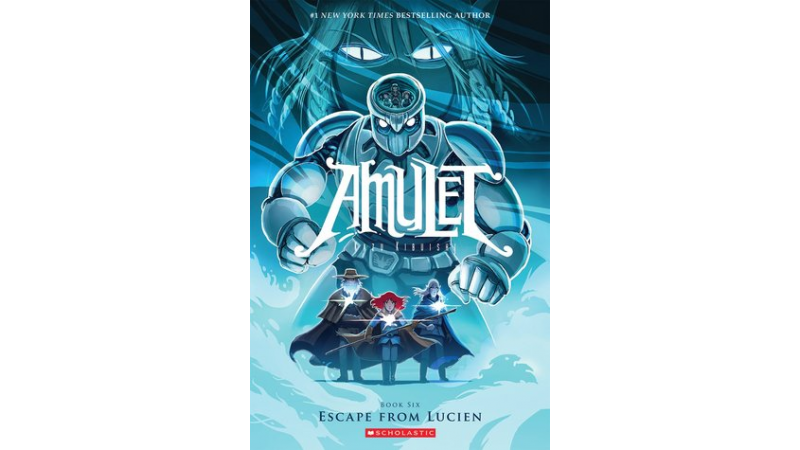As I mentioned in my previous post, during 2014 we Scholastic librarians helped out with The Joy and Power of Reading: A Summary of Research and Expert Opinion, written by Lois Bridges Ph.D. Doing research for our colleagues, we come across a lot of great ideas that are being implemented in classrooms and libraries and then written up by teachers and librarians for professional and academic publications.
Last time, I introduced innovative research on music in mathematics and first-year teachers engaging multiliteracy. Here are three more interesting articles that were published this past year; and at the end of each summary there is a link to a full-text/peer-reviewed search run on ERIC, so that you can go more in-depth on each topic.
Enjoy!
Brendler, Beth M., and Laurel Tarulli. 2014. “Blurring Gender Lines in Readers’ Advisory for Young Adults.” Reference & User Services Quarterly 53 (3): 221–24.
- Taking on the concept of “boy books” and “girl books”, this piece discusses how to approach readers’ advisory with a millennial generation that doesn’t see societal roles so strictly fixed. Dystopian and post-apocalyptic stories now feature strong heroines; and there are a lot of bestselling realistic (romance) novels told from the male perspective. The author points out that “Three of YALSA’s 2013 Top Ten Best Fiction for Young Adults are about males and relationships” (223). If you check the 2014 list, this observation is still on the mark. So, with boys reading romance and girls reading science fiction, this article points out that we need to “approach every reader as an individual” (222). MORE ON THIS TOPIC
 Jennings, Kimberly Ann, Audrey C. Rule, and Sarah M. Vander Zanden. 2014. “Fifth Graders’ Enjoyment, Interest, and Comprehension of Graphic Novels Compared to Heavily-Illustrated and Traditional Novels.” International Electronic Journal of Elementary Education 6 (2): 257–74.
Jennings, Kimberly Ann, Audrey C. Rule, and Sarah M. Vander Zanden. 2014. “Fifth Graders’ Enjoyment, Interest, and Comprehension of Graphic Novels Compared to Heavily-Illustrated and Traditional Novels.” International Electronic Journal of Elementary Education 6 (2): 257–74.
- This reading study compared three different types of texts – graphic novels, heavily illustrated novels, and traditional novels – and used written assessments, creative products, and discussion responses, to determine which format engaged students with the most success. Students worked in literature circles, ultimately reading two of each type of text, and the reading list included several individual and series titles from Scholastic: The Three Questions, Bone, Amulet, Smile, Captain Underpants, The Invention of Hugo Cabret, Into the Volcano, and The Secrets of Droon. Student discussion leaders used de Bono skills to analyze the stories, and the data presented shows that the “reading of graphic novels stimulated more student discussion using the structure of thinking skills and greater story comprehension” (271). MORE ON THIS TOPIC
Polman, Joseph L., Alan Newman, Ellen Wendy Saul, and Cathy Farrar. 2014. “Adapting Practices of Science Journalism to Foster Science Literacy.” Science Education 98 (5): 766–91.
- This article points out that science instruction usually models the day to day practice of career scientists, with students conducting experiments and writing lab reports. Since these are science literacy habits that only a segment of students will continue after high school as professionals, the authors suggest another career path to model as part of science instruction – that of the science journalist. Analyzing the habits of good science reporting, five criteria are put forward for measuring science literacy through journalism: focused topics with unique angles, effective relevant research, credible attributed sources, discussion of the broader implications, and accurately represented up-to-date science. Finally, the article stresses the importance of providing an authentic publication venue that is valued by the community, which leads to a discussion of SciJourner, a science news publication available on the web and in print, and SciJourn, a project based at the University of Missouri-St. Louis College of Education with the goal “to develop, pilot and research an innovative and flexible curriculum that teaches high school students the basics of science reporting”. MORE ON THIS TOPIC
Every year teachers and librarians conduct research studies in classrooms and libraries in order to “open a world of possible” for the next generation, empowering students and hooking children, tweens, and young adults, on the joy and the power of reading.
Let’s thank them by implementing their results and building on their work!
What innovative ideas are you trying in your classroom and/or library this year?



